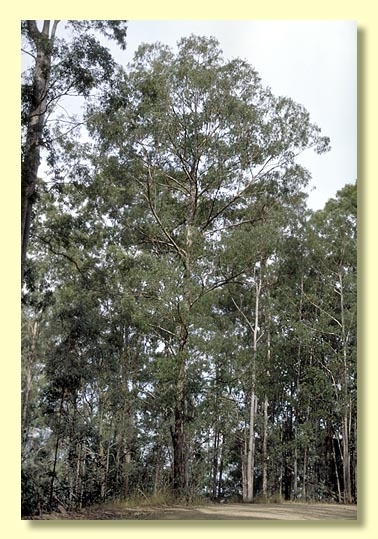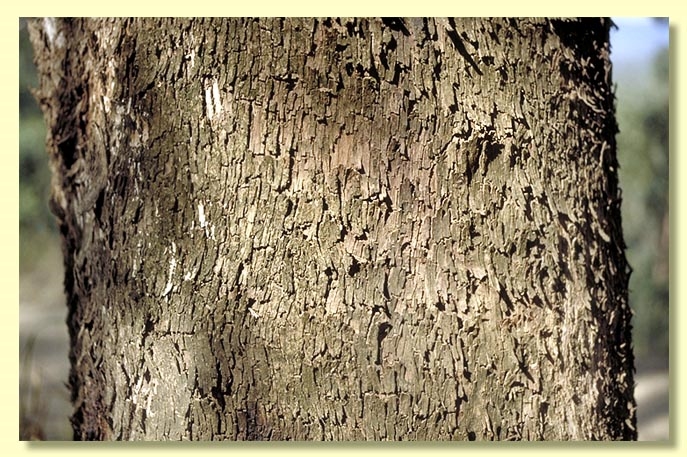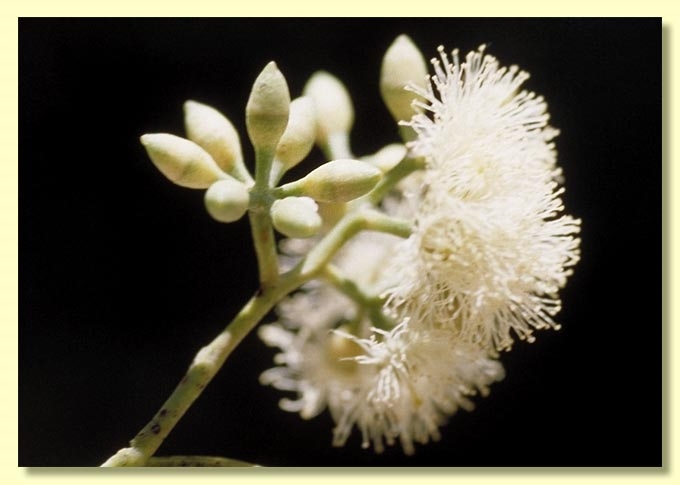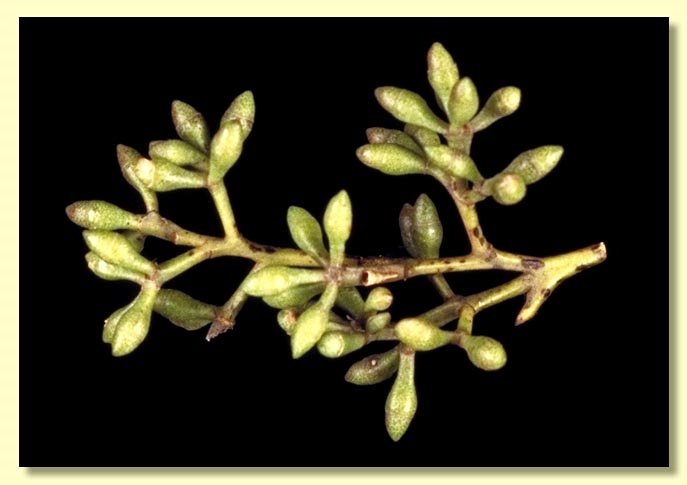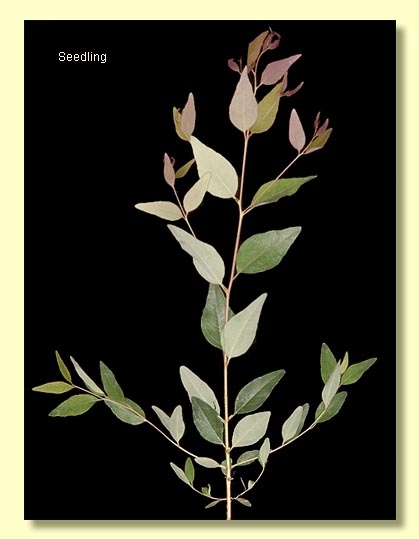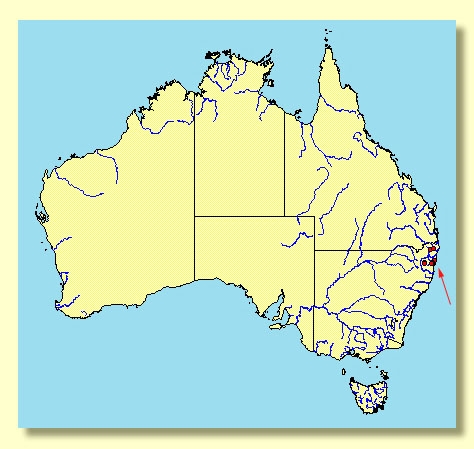Euclid - Online edition
Eucalyptus rummeryi
Eucalyptus | Symphyomyrtus | Adnataria | Apicales | Buxeales | Amissae
Bark rough to small branches, box-type, usually tessellated, grey to black.
Juvenile growth (coppice or field seedlings to 50 cm): stem square in cross-section, sometimes slightly winged; juvenile leaves always petiolate, opposite for 3 to 8 pairs then alternate, ovate to lanceolate, 5.5–11 cm long, 1.5–3.5 cm wide, base rounded or tapering to petiole, discolorous, dull, green.
Adult leaves alternate, petiole 0.8–2.2 cm long; blade lanceolate to falcate, 8–17 cm long, 1–3 cm wide, base tapering to petiole, discolorous, glossy, green, side-veins greater than 45° to midrib, densely to very densely reticulate, intramarginal vein parallel to and just within margin, oil glands mostly intersectional.
Inflorescence terminal compound, and sometimes compound in sub-terminal axils also, peduncles 0.5–1 cm long, buds 3 or 7 per umbel, pedicels 0.2–0.4 cm long. Mature buds ovoid to fusiform, 0.4–0.6 cm long, 0.2–0.3 cm wide, green to yellow, scar present, operculum conical, stamens irregularly flexed, anthers adnate, cuboid or globoid, dehiscing by broad lateral pores, style long, stigma pin-head shaped or blunt, locules 4, the placentae each with 4 vertical ovule rows. Flowers white.
Fruit on pedicels 0.1–0.5 cm long, obconical, hemispherical, or cup-shaped, 0.3–0.5 cm long, 0.3–0.5 cm wide, slightly angled, disc descending, valves 4, near rim level or exserted.
Seeds brown, 1–2 mm long, ovoid or flattened-ovoid, dorsal surface smooth or pitted, hilum ventral.
Cultivated seedlings (measured at ca node 10): cotyledons reniform to oblong; stems square in cross-section, warty; leaves always petiolate, opposite for 3 to 6 pairs then becoming alternate, ovate-lanceolate, 5–8 cm long, 1.5–3.5 cm wide, base rounded to tapering, margin entire, apex pointed, discolorous, mid-green above, slightly paler beneath.
Flowering has been recorded in November and December.
A medium-sized to tall forest box tree of north-eastern New South Wales from west of Coffs Harbour to north-west of Casino, where it occurs in wetter forests on low hills between the coastal plain and the tableland. Bark is rough to the branchlets, inflorescences are terminal and stamens irregularly flexed and all fertile. The adult leaves are paler on the underside (discolorous).
Eucalyptus rummeryi resembles another wet sclerophyll forest box species, E. largeana, but differs from it and most other box species by the discolorous leaves. Two other box-barked species found in the coastal ranges of the North Coast of New South Wales, E. rudderi and E. hypostomatica, differ in having infertile outer stamens (staminodes) which places them in a different sub-group of box species (section Adnataria series Heterophloiae). The only other box-barked eucalypt in this region is the half-barked E. moluccana which has glossy green concolorous leaves and barrel-shaped fruit.
Eucalyptus rummeryi belongs in Eucalyptus subgenus Symphyomyrtus section Adnataria (the boxes) because the buds have two opercula, ovules are in four rows, seeds are flattened-ovoid, cotyledons are reniform, and anthers are rigid on the staminal filaments. Within section Adnataria, E. rummeryi belongs in a subgroup of ca 30 box species with mostly eastern and southern distribution, series Buxeales, further characterised by having some rough bark and buds that shed the outer operculum early in development. Within series Buxeales, E. rummeryi is most closely related to E. largeana, the widespread arid zone species E. intertexta, and temperate Queensland species E. orgadophila, because all stamens are fertile.

